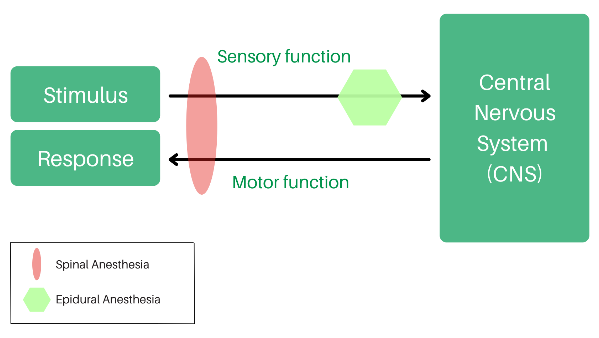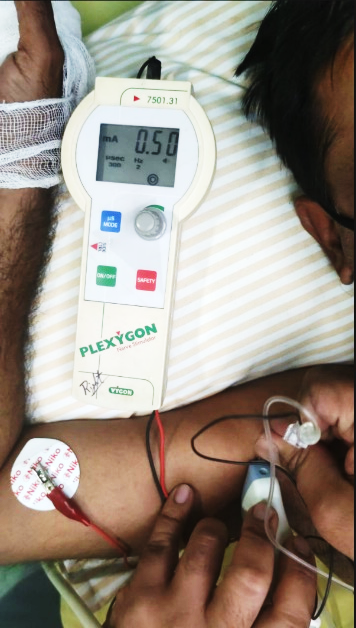A Complete Overview of Nerve Block Techniques in Anesthesia
Modern surgical methods, changing patient needs and the emergence of minimally invasive procedures have led to an increase in outpatient treatments. Due to this demand, analgesia and anesthesia therapies have also improved.
Today, anesthesia makes it possible to undergo the most complex procedures in intensive care units that last for hours to minor surgeries in OPD setups. Almost anyone can receive anesthesia, from premature babies to frail elderly patients. Today, anesthesia is considered safe, versatile and indispensable for patient care. Let’s review various types of anesthesia and their limitations:
1. General Anesthesia
In this procedure, the whole body is anesthetized to induce a coma-like state of unconsciousness. The most common application of general anaesthesia is during major surgeries such as heart surgery, knee replacements, and cancer treatment when it is safer and more comfortable for the patient to remain unconscious. While it provides comfort to the patient and surgeon, general anaesthesia helps to relieve muscular tension.
Due to the usage of high dosages of anaesthetic, this procedure poses the risk of inhalation of gastric contents. The process remains long, intricate, and expensive with some common side effects like nausea, vomiting and sore throat due to intubation.
2. Regional Anesthesia
The term regional anesthesia refers to numbing a region or portion of the body (limited area) with a local anesthetic that is injected near the nerves leading to that area. Regional anesthesia can be further classified as follows:
2.1. Spinal Anesthesia
In this type of anesthesia, a small dose of the drug is injected with a needle directly into the fluid surrounding the spinal cord, inside the subarachnoid space (lumbar spine). It effectively blocks motor and sensory functions and causes rapid numbing action in the lower half of the patient. Spinal anesthesia is therefore commonly used in suegeries below umbilical region, which includes the pelvis, lower abdomen and lower extremities.
Despite its ease of execution and high success rate, this procedure can further expose the patient to irritation, nerve root trauma, and hemodynamic consequences. In addition, this type of anesthesia cannot be used as postoperative analgesia.

Nerve Conduction Pathway
2.2. Epidural Anesthesia
In epidural anesthesia, a larger dose of anesthetic is injected outside the spinal cord (into the epidural space) through a catheter. This is a safe and easy procedure commonly used to block sensory functions in the abdomen and lower half of the body. An epidural anesthesia is often used to relieve pain during surgeries that don’t require muscle relaxation, such as childbirth and labor.
Although this type of anesthesia is better tolerated by patients hemodynamically than spinal anesthesia, it is slow-acting and sometimes carries a higher risk of failure due to insufficient muscle relaxation.
2.3. Peripheral Nerve Block
Peripheral nerve block (PNB) is another type of regional anesthesia that is an effective, precise, and focused procedure with fewer risks (particularly hemodynamic) and a short recovery time. This technique involves injecting a drug next to a bundle of nerves to block motor signals in the targeted area.
It only numbs the area to be operated on without harming vital body functions related to heart, lungs, kidneys, etc. PNBs are often used for short-term surgeries that are limited to the upper or lower extremities, such as the hands, feet, arms, legs, or face. It can also be extended after surgery, if needed, using a catheter.
3. Local Anesthesia
Local anesthesia is used to relieve pain in a small area by injecting an anesthetic with a needle or applying an anesthetic cream. Anesthesia is given as a single injection in minor outpatient surgeries such as dental procedures, deep sutures, skin biopsies, repair of broken bones, etc. It can even be given in conjunction with other anesthesia to provide additional pain relief.
Role of Peripheral Nerve Block in Anesthesia
In multiple studies, peripheral nerve blocks (PNB) have been found to be superior and better tolerated than other anesthetic techniques such as general anesthesia and should be considered for surgical, non-surgical, and postoperative anesthesia.
What is a nerve block?
A nerve block or neural blockade is a medical procedure that induces anesthesia by blocking pain signals in a particular area or organ of the body. It interferes with nerve conduction pathways and prevents nerve impulses from reaching the central nervous system (CNS).
The peripheral nervous system or plexus neural block is performed by injecting an anesthetic around a specific group of nerves, called a plexus or ganglion, to temporarily cut off the pain signals coming from that particular body area to the central nervous system. They typically offer short-term pain relief lasting anywhere between 8 and 36 hours.
Types of Nerve Blocks and their indications
Techniques of Nerve Location during a nerve block
Prior to injecting the dose of anesthetic, it is crucial to know the anatomy to accurately choose and block the nerve trunks serving the targeted area of the body. For this purpose, the anesthesiologist may employ one or more of the following techniques: –
1. Blind or Landmarking technique
This anatomical landmarking procedure is outmoded, and it involves estimating the location of the nerve bundle using only the naked eye in order to locate it.
2. Ultrasound-guided technique
This technique is performed using an ultrasound machine and an echogenic probe. Ultrasound-guided nerve block allows real-time imaging of the positions of the targeted nerve (deeper and superficial), needle, surrounding vasculature and other anatomic structures.
3. Electro-neurostimulation
Electro neurostimulation is a technique that involves the use of a neurostimulator device that transmits a small amount of current to the tip of echogenic needles or probes to stimulate the particular nerve(s). The response from the nerve is then recorded and further action is taken. For superior precision, anesthetists employ the ultrasound-guided and nerve stimulation technique together to locate the nerve bundle.
Nerve Localisation using neurostimulator, Plexygon,
before performing Peripheral Nerve Block
Benefits of Peripheral Nerve Block (PNB)
Peripheral nerve block enables patients to recover much faster, allows movement and muscle activity (early kinesia), and if needed physical therapy sessions can be initiated as soon as possible. Because anesthesia is limited to only one limb, there are few side effects and hemodynamic repercussions. It also reduces the risk of allergies. As anesthesia can be extended post-operatively through a catheter, the possibilities of outpatient surgery are increased. A peripheral nerve block is further indicated in cases where:
- Patients show intolerance or are unresponsive to oral drugs
- Patients who are highly prone to respiratory depression related to general anesthesia
- Patients who refuse to undergo systemic medications
Complications
Nerve blocks are normally considered to be low-risk and minimally invasive. Still, there are potential risks associated with them. The local anesthetic can cause toxicity when administered intravenously. Therefore, it is pertinent to perform fractional injections routinely and not exceed the permissible dose. Physical discomfort and irritation due to accidental contact between the needle and the nerve during localization or by intraneuronal injection is another major complication, which may cause damage to the nerve.
Despite its infrequency, peripheral nerve injury
is a complication that arises as a consequence of
regional anesthesia with an incidence rate of 0.5% – 1%.
In addition to the risks and side effects, there are other several factors to consider including, accidentally administering the drugs into the bloodstream or hitting an unintended nerve. While performing a peripheral nerve block, it is very important to place the anesthetic drug as close to the nerve trunk as possible to eliminate the chances of failure. Although the nerve localization techniques are more difficult and require the expertise of a well-versed anesthetist or surgeon, they remain the most effective and frequently performed anesthetic procedure.
***
Learn more about our regional anesthesia and Plexus & Peripheral Nerve Block product and solutions: https://vygonindia.com/product_type/regional-anaesthesia/










